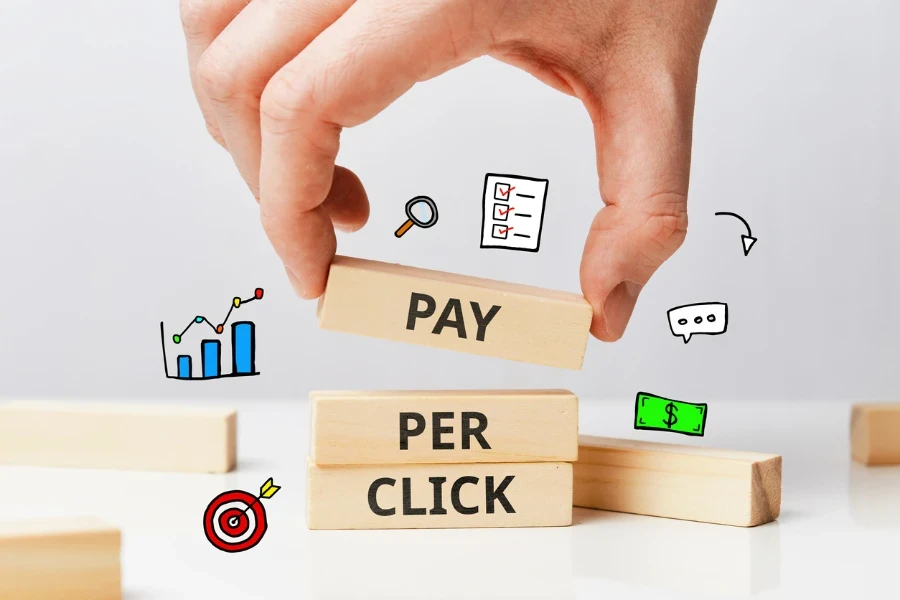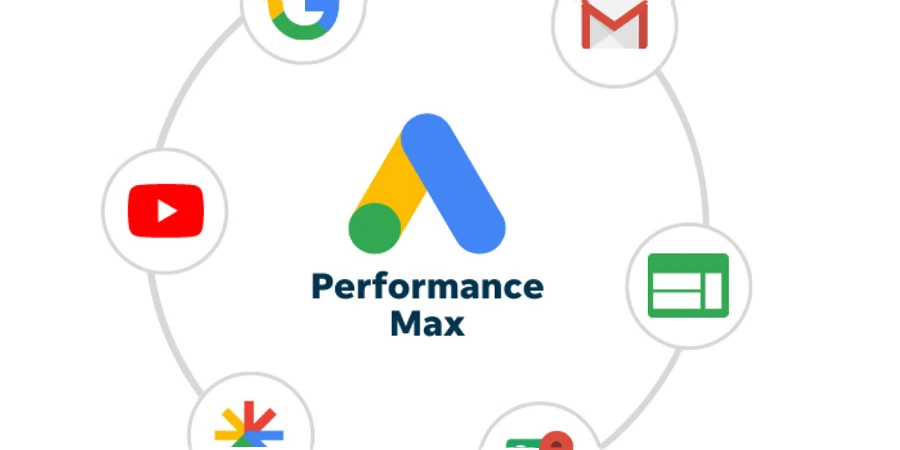Google Ads has been helping e-commerce companies drive sales and revenue for years now. But as the industry evolves, what worked yesterday may not work tomorrow. To stay ahead of the competition in 2024, e-commerce marketers need to focus on the latest strategies and techniques.
Whether you’re just getting started with Google Ads or looking to breathe new life into your existing campaigns, there are innovative approaches that can help your business beat the competition. This article will explore five of the hottest Google Ads strategies poised to deliver real results for e-commerce brands in the coming years. Keep reading to learn more.
Table of Contents
What is Google Ads?
Types of Google Ads
5 Google Ads strategies to crush e-commerce in 2024
Conclusion
What is Google Ads?
Google Ads, formerly known as Google AdWords, is Google’s advertising system in which advertisers bid on certain keywords in order for their ads to appear on search engine result pages (SERPs) and Google Display Network placements.
Over 90% of global internet users are able to see Google Ads, meaning that approximately more than 4.77 billion people can see these ads, the reason over 1.2 million businesses globally use the platform for marketing their products and services.
How does Google Ads work?

Google Ads works on a pay-per-click (PPC) model where advertisers choose keywords or phrases relevant to their products or services. When someone searches for that keyword or phrase on Google, the advertiser’s ad may appear on the search results page.
If someone clicks the ad, the advertiser pays Google a small fee. The fees, also known as cost-per-clicks (CPCs), vary depending on the keyword and the competitive landscape.
Businesses bid on keywords and phrases relevant to their products and services. The higher the bid, the more prominently the ad is displayed. They can choose between manual bidding, where they set maximum bids for each keyword, or automated bidding, where Google Ads uses machine learning to optimize bids based on the business’s budget and conversion goals. Automated bidding is often the most effective approach.
Google also evaluates the quality and relevance of ads and keywords using a quality score. The quality score determines where ads appear and how much businesses pay per click.
Higher quality, more relevant ads and keywords result in a higher quality score, lower costs per click, and more prominent ad placement. Businesses should, therefore, choose highly relevant keywords and create compelling, useful ads to achieve the best quality scores.
Types of Google Ads
Google Ads offers several types of ads to choose from to promote your e-commerce business. The three most popular options for e-commerce sites are:
1. Search ads

Search ads are those that appear at the top of Google search results pages. They allow you to target people searching for products or services related to your business. With search ads, you only pay the fee when someone clicks your ad.
2. Shopping ads
These are ads that showcase products from your catalog, including images, prices, and a link to buy the item. They appear prominently at the top of search results and on the Google Shopping tab. Shopping ads are effective if you want to drive traffic and sales. You only pay when someone clicks to view a product detail page or buys an item from your store.
3. Display ads
Display ads appear on websites, videos, and mobile apps in the Google Display Network. They come in several formats, including text, image, and video ads.
These ads are a good option if you want to build brand awareness and reach new potential customers. You can target display ads based on interests, keywords, topics, locations, and more. Payment is based on impressions (views) or clicks.
Using a combination of these Google Ads will help maximize your e-commerce success. You can Start with search ads to drive traffic and sales, then add shopping ads to promote your products and display ads to increase your business brand’s visibility.
5 Google Ads strategies to crush e-commerce in 2024
1. Start with the right goals and KPIs for your Google Ads

To achieve e-commerce success with Google Ads in 2024, the first step is setting the right goals and key performance indicators (KPIs). The days of chasing clicks and impressions are over. Now it’s all about driving relevant traffic that converts. You can set goals for important KPIs such as the following:
Click-through rate (CTR)
CTR is calculated by dividing the number of clicks on your ad by the number of impressions. For instance, if you received 5 clicks and 100 impressions, your CTR would be 5%.
Aim for at least 2-3% to start. The higher the CTR, the more relevant your ads are to searchers.
Cost per conversion (CPC)
The cost per conversion (CPC) estimates the cost of converting a lead or prospect into a customer. It is computed by dividing a marketing campaign’s total cost by the number of conversions.
For example, if a campaign costs US$ 1,000 and results in 100 conversions, the CPC is US$ 10. Try to keep this metric under US$ 20-30. The lower your CPC, the more optimized your campaigns are.
Return on ad spend (ROAS)
This marketing metric calculates the amount of income generated for every dollar you spend on advertising. You can learn about the success of your advertising by calculating and tracking ROAS.
In one month, for example, after spending US$ 200 on an ad campaign and generating US$ 1000 in income that month, the ROAS is a 5 to 1 (or 500 percent) ratio since US$ 1000 divided by US$ 200 is US$ 5. For this KPI, shoot for at least 2:1 to turn a profit.
Conversion rate
A conversion rate is calculated by dividing the total number of users who completed an action by the total size of the audience exposed to that ad, then multiplying by 100.
For instance, suppose you run an ad campaign with a target audience of 20,000 people, and 800 people in that category click on the ad and buy the item. To compute the conversion rate in this example, divide 800 by 20,000 to get 0.04, or 4%. As a beginner, 3-5% is a good target.
Additionally, closely monitor which ads and landing pages are converting best and make necessary adjustments if needed.
2. Focus on high-intent keywords that convert

Focusing on high-intent keywords that actually drive conversions is one way you will dominate e-commerce in 2024. You should look for keywords that indicate a buyer is actively looking to make a purchase.
Consider phrases like “buy [product name],” “[product name] for sale,” or “[product name] near me.” Compared to broader terms, these keywords with strong intent are more likely to result in a sale.
Also, choose keywords that match your most popular or highest-margin products. There is no point driving traffic to your site if those visitors aren’t interested in your bestsellers or biggest moneymakers.
Once you have selected the right keywords, make sure your ads and landing pages are tailored to match. The ads should prominently feature the product the customer is searching for.
For your landing page, you should make it easy to learn more about that product or complete a purchase; otherwise, you may lose prospects.
Laser-focused keywords and tight ad/landing page relevance will help you succeed in ecommerce. And if you need help choosing the best keywords or crafting compelling ads, don’t be afraid to work with experts. They can help take your Google Ads game to the next level.
3. Structure your account for maximum returns

The way you structure your campaigns and ad groups is critical to maximizing your returns. To get the most out of your Google Ads account, you need to set it up for success.
Start by grouping your keywords and ads by match type – exact match, phrase match, and broad match. Exact match campaigns allow you to target high-intent shoppers with tight control over impressions, whereas phrase and broad match campaigns cast a wider net to increase traffic. Separating by match type gives you more granular control over bids and budgets for each.
Another way of structuring your Google Ads account is creating ad groups around specific products, categories, and brands. This allows you to optimize keywords and bids for each product.
For example, if your e-commerce store sells shoes, have one ad group for running shoes, one for hiking boots, and another for cross trainers. You can then choose the keywords and design ads tailored for each of these product groups.
The last way is to use demographic targeting. Take advantage of Google’s wealth of customer data to target specific demographic groups like age, gender, income level, location, and interests.
An example can be targeting ads for high-end jewelry at audiences with an income over US$ 100K and an interest in luxury goods. Demographic targeting ensures that your ads reach the audiences most likely to convert.
4. Test different ad formats and placements

Google Ads offers several ad placements and formats to choose from, and testing different options can help determine what resonates most with your audience and drives the best results.
The main ad formats for e-commerce are text ads, responsive ads, and shopping ads. Text ads are simple text ads that allow a few lines of text and two headlines.
Responsive ads generate an ad automatically using your website content and images, whereas shopping ads feature product images, prices, and a link that directs to your product page.
Try running A/B tests of text versus responsive ads and shopping ads versus responsive ads to see which one has the highest click-through rate and conversion rate.
In addition to the search network, consider testing display ads and video ads on the Google Display Network and YouTube. Display ads contain images, text, and video, which capture attention and raise your brand’s awareness.
Evaluating views through conversions and engagement metrics can help determine if these placements are worthwhile for your e-commerce business.
5. Automate and optimize bidding strategies

One of the most powerful ways to optimize your Google Ads campaigns is through bidding strategies. As the e-commerce landscape evolves, smart automation will be key to staying ahead of the competition.
Google’s automation bidding strategies use machine learning to optimize your bids to achieve the goals you set.
Smart bidding considers factors like device, location, time of the day, and more to determine the optimal bid for each auction.
The two recommended bidding strategies for e-commerce are:
- Target cost per acquisition (tCPA): You set a target CPA, and Google will automatically adjust your bids to achieve that goal. This helps ensure you get the volume of conversions you want at the price you want.
- Target return on ad spend (tROAS): Here, you set a target ROAS, and Google optimizes to achieve that revenue goal. This strategy is ideal for maximizing revenue and ROI from your ad spend.
To implement automated bidding, start by choosing a strategy and setting a target. Google will then gather the data from your campaigns and adjust bids over time to optimize performance.
Be sure to set reasonable targets based on your historical metrics and industry benchmarks. In addition to that, check back regularly to see how the strategy is performing and make necessary adjustments.
Conclusion
After trying out these five strategies, e-commerce owners will be well on their way to cracking the Google Ads code and achieving success in 2024. These tips will help marketers focus on the creative work of crafting compelling ads and landing pages.
By optimizing for conversions and letting the algorithms do their thing, even beginners can achieve a high ROI. The future is bright for e-commerce, and with the help of Google Ads, anyone can thrive. Start putting these tactics into practice right away and watch your business grow.








